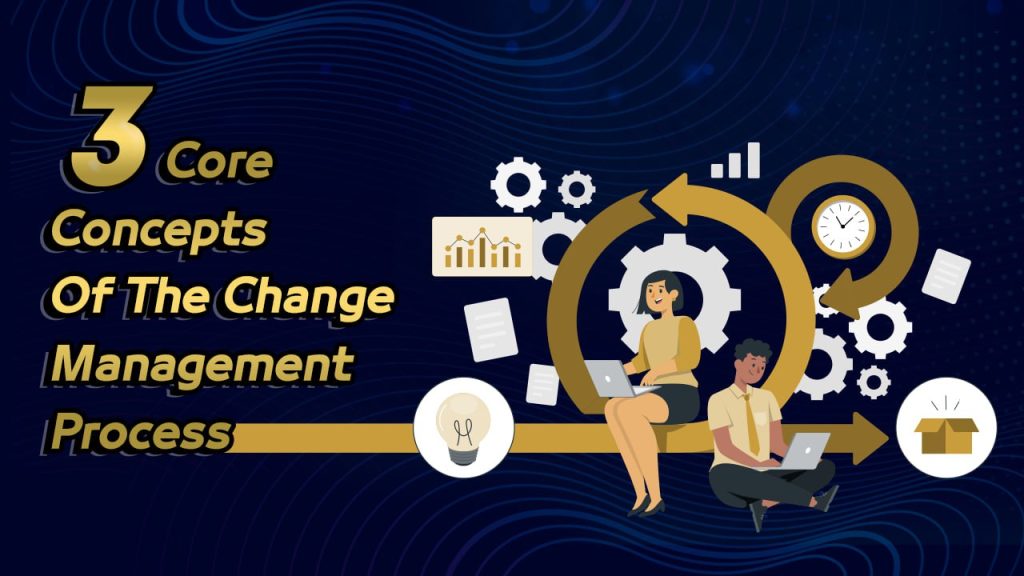Post Date: March 17, 2023

What Are Three Core Concepts Of The Change Management Process?. Change management is the process of introducing and managing change in an organization in order to achieve a desired outcome. It can involve a range of activities, from developing a strategic vision to making sure changes are implemented and reinforced.
It is an important tool for HR professionals to ensure that their organization is able to effectively respond to changes in the market and the environment. Change management processes typically involve identifying potential points of resistance, developing a strategy, preparing a team, and creating a sponsorship model.
The ADKAR model is often used to guide the change management process, involving awareness, desire, knowledge, ability, and reinforcement. When introducing change, it is important to ensure that employees have the necessary knowledge and skills to be able to successfully implement change. Additionally, it is important to provide feedback and recognition in order to reinforce the desired changes and ensure they become longstanding.
In this article, Succeeding in Business will explore what are three core concepts of the change management process?. Understanding these concepts is essential for successfully navigating organizational change and driving positive outcomes.
By implementing effective change management strategies, businesses can adapt, grow, and thrive in today’s dynamic and competitive landscape.

Writing a Book with Brian Tracy
Apply now in Just 2 minutes to become co-author of Brian Tracy’s next international bestselling project.
The Three Core Concepts Of The Change Management Process
1. Awareness
The first step in the change management process is to create awareness of the need to change. This means communicating the importance of the change ((https://www.briantracy.com/catalog/effective-communication-kit)), and why it is necessary, to everyone in the organization. This will help employees understand why they need to make the change, and why it is beneficial for them and the organization.
2. Desire
The second step is to create a desire to support the change. This involves creating an environment that encourages employees to embrace the change, and providing incentives to motivate them to make the change. This can include offering rewards or recognition for those who make the change, or providing resources or training to help them make the transition smoothly.
3. Knowledge
The third step is to provide knowledge about how to make the change. This includes providing guidance on how to implement the change, and giving employees the tools and resources they need to be successful in their transition. This could include training materials, webinars, or even on-site workshops. Providing this knowledge helps employees understand what they need to do and gives them the confidence to take action.
Who Is In Charge Of Making Change Management Effective?
HR professionals are responsible for making change management work in an organization. Change management, as a process, typically rests within HR because they are most in tune with people and people are imperative to change. HR plays a key role in ensuring their company follows a strong, stable and well-thought-out change management process.
C-level executives are accountable for managing the changes themselves and the results it brings, but HR is responsible for making sure the change is implemented properly. They are tasked with identifying anticipated points of resistance, defining change management strategies, preparing teams, and developing sponsorship models.
They should also create a sense of urgency, build a guiding coalition, form a strategic vision and initiatives, enlist a volunteer army, enable action by removing barriers, generate short-term wins, sustain acceleration, and institute change.

How Does An Effective Change Management Process Begin?
An effective change management process begins by identifying the need for change and preparing for it. This involves identifying any points of resistance, developing a strategy to manage the change, building a team to lead the change, creating a clear vision and goals, and setting up a model to support the change.
Once the plan is in place, the next step is to enlist a volunteer army to help implement the change, remove any barriers that could prevent it from happening, and generate short-term wins to maintain momentum. Finally, the change needs to be sustained and reinforced in order for it to become permanent.
Here’s an example of Change Management ((https://whatfix.com/blog/change-management-examples/))
- Identify the Need for Change: Assess the need for change and create a plan of action.
- Develop a Change Strategy: Establish objectives, designate resources, and create a timeline.
- Communicate the Change: Provide clear, consistent communication to all stakeholders.
- Monitor Progress: Track progress and adjust the plan as needed.
- Train Employees: Provide training to ensure a successful transition to the new system or process.
- Evaluate the Change: Measure the effectiveness of the change and document the results.
How Do You Know If A Change Management Process Is Successful?
Organizations can measure the success of their change management processes by evaluating their business resilience, using HR analytics and reporting for strategic decisions, and assessing the impact of digital solutions on their administration and reporting.
McKinsey & Company found that 70 percent of change programs fail due to employee resistance and lack of management support, so it is important to ensure that employees are adequately supported throughout the process and have enough time to make the necessary changes. Additionally, providing incentives for employees to follow the new process can help ensure that the change is successful and sustainable.
To tell if a change management process is working, organizations should monitor the progress of projects, compare the results of change initiatives to the original goals, and assess the impact it has on the bottom line. Regularly tracking the results of change initiatives, such as customer satisfaction, employee productivity, and cost savings, provides a clear indication of how successful the change management process is.
Additionally, it’s important to assess the impact the process has on employee morale and engagement, as well as its effect on the overall organizational culture. Finally, success can be measured by the speed of adoption and compliance of the new processes and procedures. By regularly assessing these areas, organizations can measure the effectiveness of their change management process and make necessary adjustments to ensure success.
Change Management Processes Can Be Easily Implemented
Change management processes don’t have to be complex, but they do need to be effective. The key to making them successful is to give the change enough thought and consideration. People need enough time to make the change happen, an understandable reason to do it, and a way to make it as easy as possible.
By creating a sense of urgency, building a strong guiding coalition, forming a strategic vision and initiatives, enlisting a volunteer army, removing barriers to action, generating short-term wins, sustaining acceleration, and instituting change, organizations can establish processes for successful and sustainable change. HR teams can also use digital solutions to support their administration and reporting, which can help them better prepare for crises and subsequent recovery.
Frequently Asked Question About Change Management
Change management typically rests with HR, as they are most in tune with people and change. C-level executives should be accountable for managing the changes themselves, and HR can be responsible for ensuring their company follows a strong and stable change management process. Additionally, employees, teams, and departments must be involved in the change management process to ensure it is successful.






